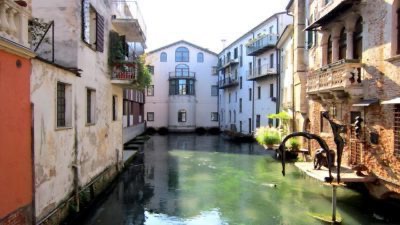
Again Milan e Royal Palace they do not disappoint art lovers.
The exhibition dedicated to Gustav Klimt it is a tribute to what is defined as a “total work of art”, that is the sum of the applied arts. In a single exhibition, painting, architecture and music come together in a combination that captivates the viewer and enchants him in front of dreamlike and sensual works.
Klimt is the leading exponent of Viennese secession, that movement, to which painters and architects joined, which broke with the past and began a new cultural path, in a conservative context that misinterpreted his works and that forced him to move away from the academic and recognized world of the time, but which he made him famous to posterity for his golden paintings, stylized and linear forms and expressive realism. The secessionist style is similar to the Spanish Art Nouveau and Modernism but in Vienna it is characterized by the predominant use of gold, for the representation of figures, mainly female, floating in a dream world, in contrast to the prevailing rationalism of the time and represents the decadent Viennese world at the end of the 800th century, wrapped in a cosmic pessimism, a prelude to the end that will happen with the First World War when the Austro-Hungarian Empire was defeated.
From a formal point of view, the Italian influences of the gods are strong in Klimt's work mosaics of Ravenna, a city he visited several times, and the basilica of San Marco in Venice, another city he loved and in which he spent time studying the polychrome floors and the golden mosaics of the facade and interiors.
The most interesting room of the Milan exhibition, in my opinion, is the one with the faithful reproduction of the beautiful Beethoven frieze, made in 1902 on the occasion of the XIV exhibition of the artists of the Viennese Secessine as a pictorial representation of the Ninth Symphony. The great composition, the sumptuousness of the paintings and the background music of Beethoven kidnap, excite and seduce. The original painting is kept in the Secession Building in Vienna of which there is a beautiful wooden model and the bronze bust of Beethoven made by Max Klinger is also visible.
In fact, the exhibition also includes works by other colleagues and by contemporaries of Klimt, to complete the reading of the period and give an overview of the secessionist period. I am also present some letters, postcards and family portraits to frame the artist in his context, understand the connections, relationships and influences they had on him and on the work. For example, it turns out that the female figures and dresses are inspired by the partner of his life: Emilie Floge, inspirational muse and fashion designer who managed to establish herself for her creations made of precious fabrics, golden embroidery, iridescent threads and fabrics with motifs floral. It seems that even the Sunflower both the personification of Emilie, a single large flower on a background studded with golden dots, therefore not the representation of a floral element but the solitary representation of her beloved. The female figure, however, was not always positive in the culture of the time, even if Klimt maintained an ambiguous position in this regard, but Salome represents the femme fatale who destroys man and drives John the Baptist down to the underworld.
In the period of maturity, after the golden period, Klimt pursued a more realistic style, influenced by the advent of photography, and during which he represented characters in a more precise and detailed way. Some very beautiful in the exhibition paintings of his brother Ernst, who died prematurely at the age of only twenty-nine, and by Franz Matsch who represents his children in two paintings with refined and accurate details.
The exhibition is comprehensive, interesting and fascinating and worth a visit
Will remain open until 13 July 2014 with the following times:
Monday 14.30-19.00
Tuesday-Sunday 9.30 19.30 Thursday and Saturday extension until 22.30.
Admission € 11,00























